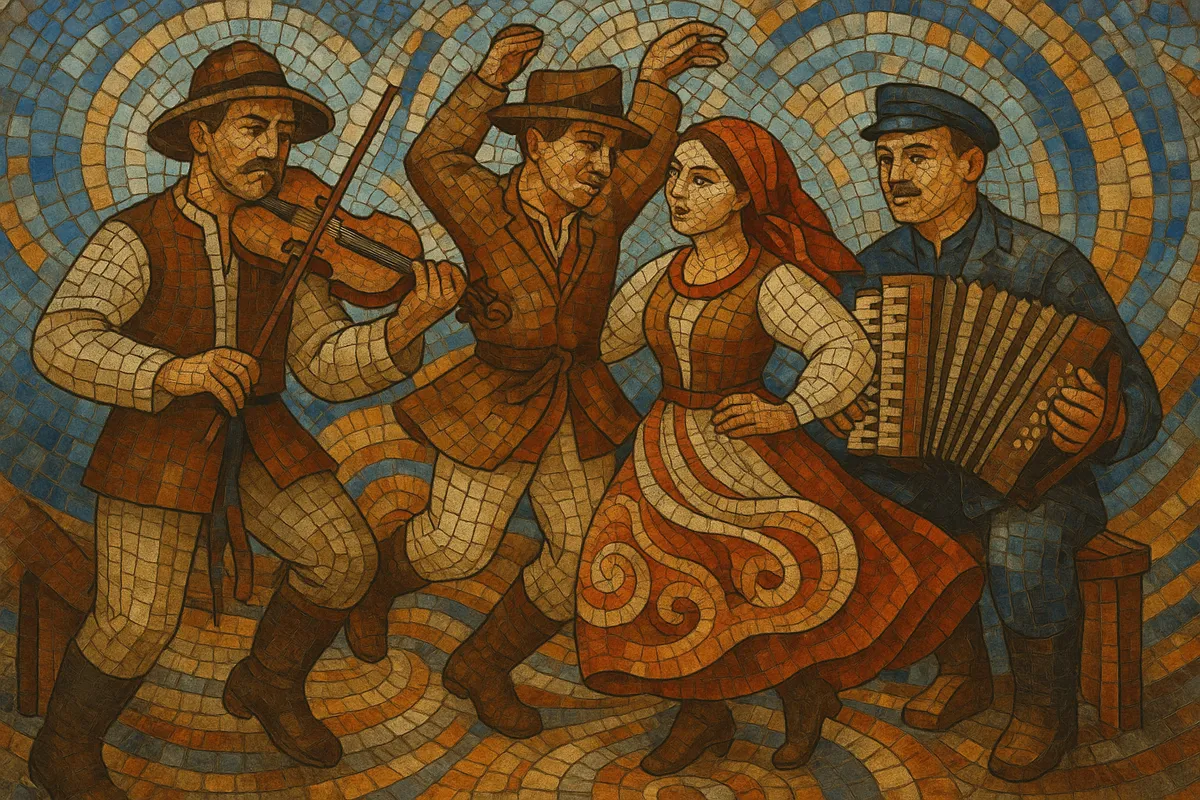Mazur (often known internationally via the broader "mazurka") is a lively Polish triple‑meter dance and musical form from the Mazovia region.
It is characterized by accents that frequently fall on the second or third beat of the bar, dotted rhythms, heel-clicks and stamping in the dance, and brisk, swirling motion.
In folk settings it is played by village bands (kapela) led by fiddles, with basy (a three‑string folk bass), accordion or clarinet; in art music it is most famously realized at the piano by Frédéric Chopin and later composers.
The style ranges from rustic and energetic to elegant ballroom variants, but it consistently preserves its asymmetric accentuation and rhythmic swing.
The mazur emerged in the 18th century among rural communities of Mazovia in central Poland.
It developed as a triple‑time dance distinct from, yet related to, other Polish national dances (such as kujawiak and oberek), with a characteristic displaced accent and vigorous footwork.
By the late 1700s it had begun to move from village settings to noble and urban ballrooms.
In the early 19th century the mazur became a fashionable European ballroom dance.
At the same time, Polish composers—foremost Frédéric Chopin—transformed the dance into a concert piano genre, preserving its rhythmic DNA while enriching harmony, melody, and form.
Chopin’s mazurkas (from the 1830s onward) defined the idiom for the Romantic era, inspiring later composers (e.g., Szymanowski, Paderewski, Bacewicz) and spreading the style beyond Poland.
Following partitions, war, and social change, the mazur remained a cultural emblem of Polish identity.
Professional folk ensembles (e.g., Mazowsze and Śląsk) codified stage versions, while ethnographers and revivalists sustained village repertoires and playing techniques.
Today, the mazur thrives in three spheres: folk (dance gatherings and village bands), stage/ballroom (stylized choreographies), and classical (piano and chamber adaptations), with contemporary folk groups renewing interest in its traditional, groove‑driven feel.



